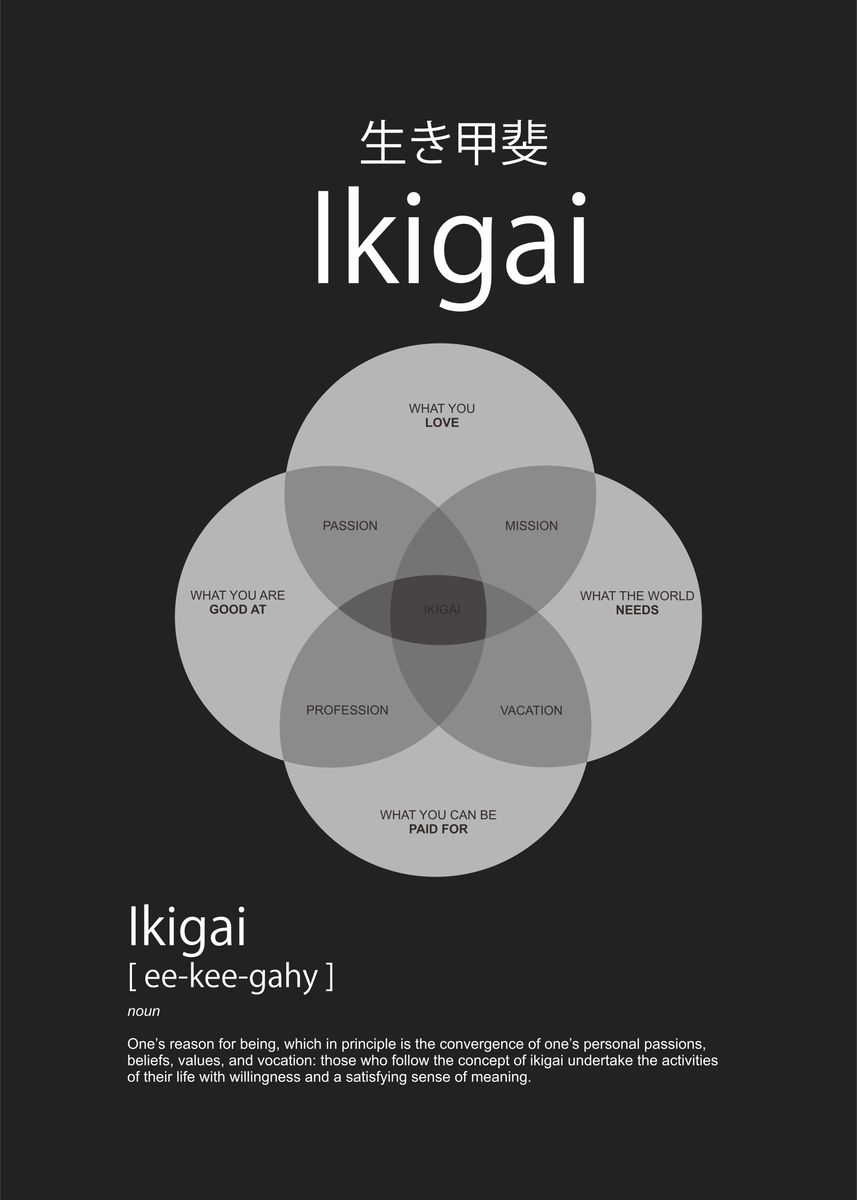
12 Productivity Shifts That Actually Stick
At Story of My Life Journal, we believe productivity should feel purposeful – not just cramming more into your day.
Finding your life purpose can be a daunting and confusing task but, fortunately, there is a simple and powerful tool that can help you discover your true calling – the Ikigai model.
Ikigai is a Japanese concept that means “a reason for being”.
It is based on the idea that you can find your life purpose by exploring the intersection of four circles: what you love, what you are good at, what the world needs, and what you can be paid for.
We’ve developed a free worksheet to help you work through this tool, which you can grab now, but we thought we’d also explain the Ikigai model in detail and provide you with some introspective questions for each section that can help you find your Ikigai.
Hopefully, by the end of this article, you will have a clearer vision of your life purpose and how to achieve it.

The Ikigai model is a framework that helps you find your life purpose by exploring four key components: what you love, what you are good at, what the world needs, and what you can be paid for.
These questions correspond to four circles that overlap with each other, creating a Venn diagram with four sections and a central point.
Each section represents a different aspect of your life:
The central point of the Venn diagram is where all four circles intersect.
This is where your Ikigai lies. It is the source of your harmony and balance.
It is what makes you feel complete and content. It is your reason for being.
Finding your Ikigai requires a process of self-reflection and experimentation. You need to ask yourself the four key questions and explore the answers in depth.
You also need to try different activities and experiences that relate to each question and see how they make you feel. By doing this, you will gradually discover your Ikigai and align your life with it.
Here are some questions for each section of the Ikigai model to help you find your life purpose:
What you love:
What you are good at:
What the world needs:
What you can be paid for:
If you want to know more about the Ikigai, we recommend checking out PositivePsychology.com.
Congratulations on making such a big move – what could be bigger than trying to tackle the question of what your life purpose is?!
Hopefully, these prompts help, but if you have any questions, don’t hesitate to get in touch.
And let us know how you go!
From your weekly companion, to your daily support tool – SOML has you covered.

At Story of My Life Journal, we believe productivity should feel purposeful – not just cramming more into your day.

We’ve all told ourselves stories that hinder our motivation – often under the guise of being patient – but more often than not, they’re a trap.

Struggling with low energy as the seasons change? Discover how journaling for mental health can help you navigate seasonal slumps, boost wellbeing, and thrive.
We support and promote positive mental health and wellbeing by providing accessible insights, tools, resources, and products that help people better understand who they are, where they want to go, and how they’ll get there.
Get to know us (and yourself) a little bit more. Join our Short Story community and get 10% off your first order, plus free tools, resources, and exclusive offers.
|
|
Thank you for Signing Up |


©️ [year] Story of My Life Journal, a division of FFPress. All rights reserved.
Terms and Conditions | Privacy Policy
Story of My Life Journal acknowledges the Wadjuk people of the Noongar Nation as the Traditional Custodians of this Noongar boodjar (Noongar land) on which we operate.
We acknowledge that sovereignty was never ceded, and we thank and pay respect to Aboriginal Elders – past, present, and emerging – for their continuous love and custodianship of the land and waterways we now get to experience and enjoy, from Boorloo (Perth) and the Derbal Yerrigan (Swan River) and beyond.
The Aboriginal people are recognised for telling and sharing stories with one another, and the Story of My Life Journal team draws inspiration from the oldest living culture in the world, as we share stories of our own and support others in understanding theirs.
Always was. Always will be.